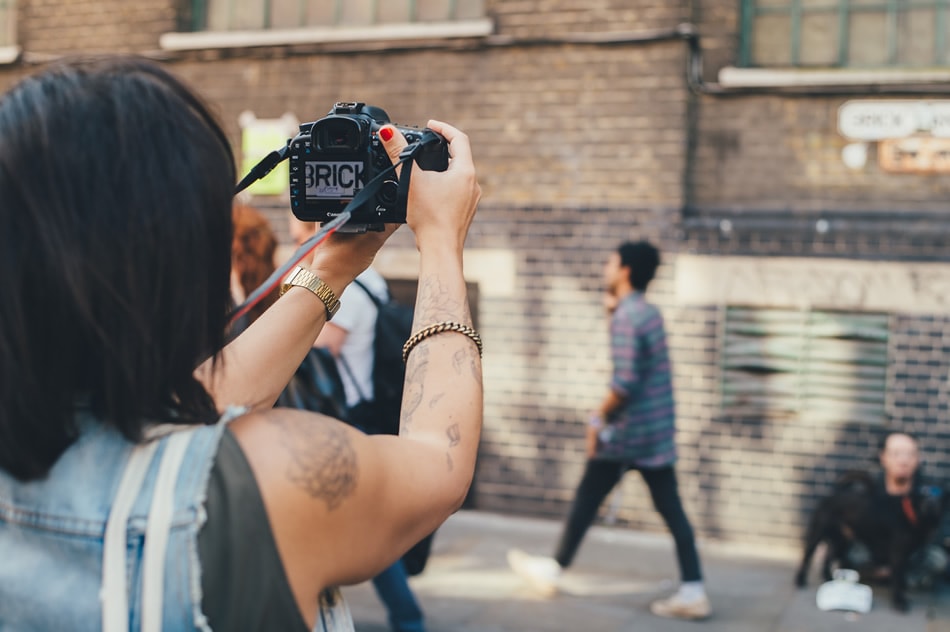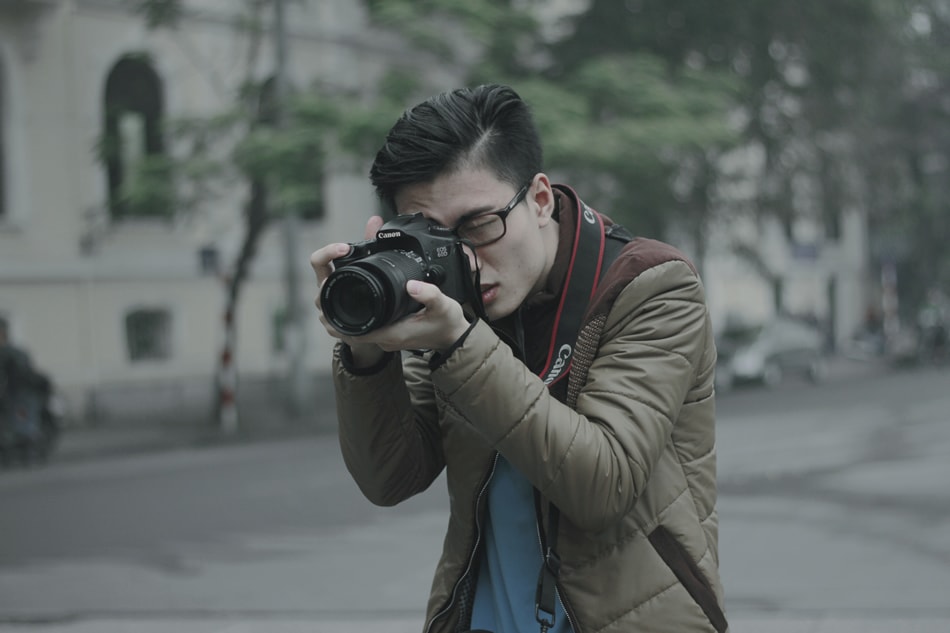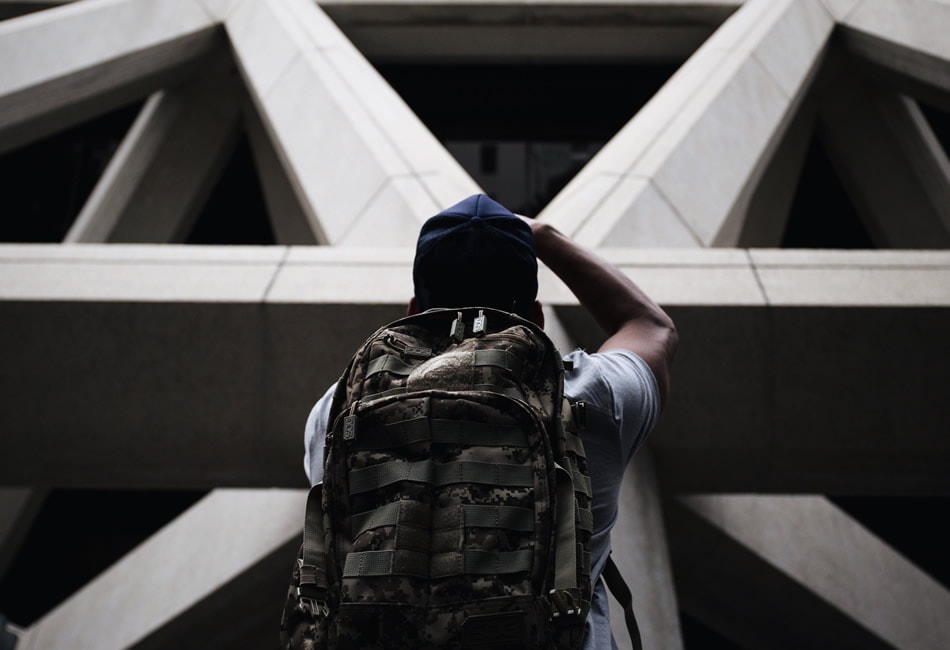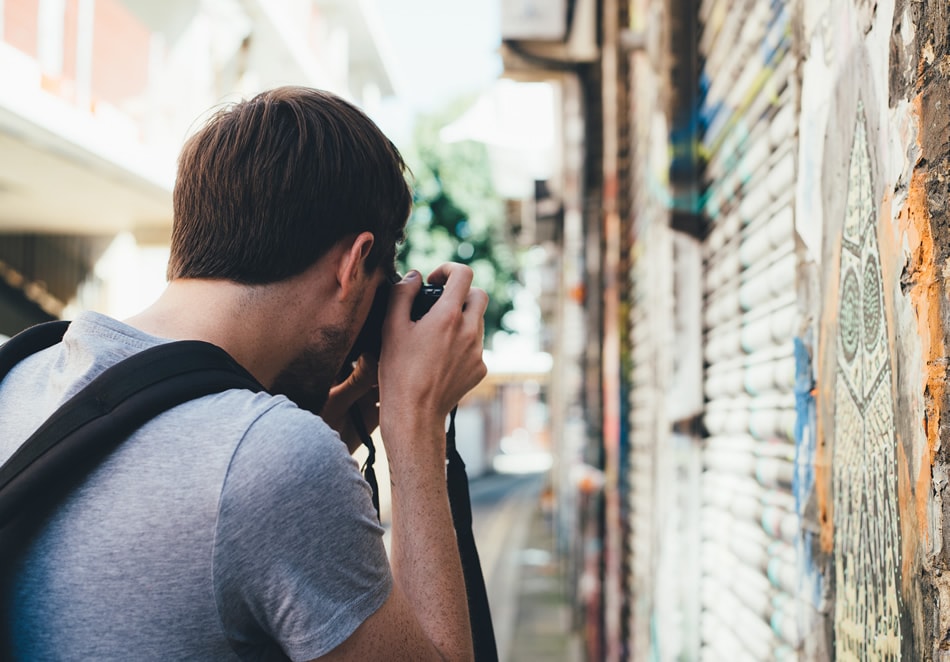So You Want to Become a Street Photographer?
Street photography presents a challenge in photography in a way that other genres and styles won’t be able to. For one thing, you’ll need to come out of your shell and really interact with total strangers.
Another thing is you need to think on the fly and improvise quite a bit as you encounter scenes that you find interesting, at the drop of a hat when you’re exploring a scene. The whole purpose of street photography is to get in close on everyday life in society and culture on the streets. This can mean both talking to your subjects as well as shooting them without their knowledge or consent. For street photography to be organic and natural, the latter would have to be achieved, but it’s not an absolute necessity. Some street photographs are also character studies that have been staged. Follow these pieces of advice to become a skilled street photographer from the get go.

Shooting From Down Low
Sometimes, it’s not always opportune or possible to hold your camera to your eye and take a normal shot when you’re on the streets. After all, it’ll feel a bit awkward if you’re just going up to total strangers and then clicking away on your camera. When you first start out, it’s often hard to adjust to this new requirement of street photography, and you may feel psyched out at having to shoot people without their permission.
So try this compromise of shooting from lower down on your body. For example, if it at first feels uncomfortable to raise the camera to your eye to snap away, try holding it as your hip or stomach. From this low level, it won’t nearly be as conspicuous to anyone who’s going to be your unwitting subject.
Of course, this will require some time getting used to, but it’s well worth it to ease your way into street photography.
Be Discreet
Street photography depends a lot on you blending into the environment and being efficient in snapping away. Some would say that you almost have to be more furtive than just discreet! Remember: People who don’t really notice you or your camera will continue behaving naturally, and it’s these candid moments that you want to capture. So how do you go about it?
For starters, it’s the clothes you wear. Don’t stand out by wearing vibrant clothing. Instead, wear dark or black clothing so you’re less conspicuous. When you’re shooting a person or groups of people, don’t attract attention to yourself by making yourself take up more space than really needed. To wit, shoot with your elbows close to your body instead of winging them out. You should also always be ready to shoot and then quickly depart, so don’t fuss around with your exposures excessively before shooting.

Dealing With Confrontations
A street photographer – unless he gets explicit approval from his subject for a staged scene – is going to eventually get confronted by unwitting subjects. If you’re not fast enough to take the shot and then depart, there’s a good chance that someone will sooner rather than later ask you about what you’re doing. Some might even get downright angry that you’re shooting them without their permission.
You essentially have three choices that you can experiment with:
- Just smile and don’t appear threatening.
- Look away and pretend to be looking at another focal point when your unwitting subject all of a sudden looks at you.
- Fib a little. If you have a smartphone with your or other music-playing devices, you can just claim that you’re simply out for a stroll and listening to some music.
Using Manual Exposure Settings
In street photography, manual exposure settings are your best buddies. On the other hand, auto-exposure readjusts your shutter speed and potentially your aperture, too, as you change framing. Auto-exposure settings are hugely dependent on the quantity of darks and lights within your frame, so it’s harder to control your scene.
Manual exposure typically works more efficiently that auto-exposure lock. Feel free to experiment with manual exposure, set up and then fine-tune your camera exposure frequently.
Normally, selecting a fairly quick shutter speed to stop movement is the way to go. When the light levels begin to go down as daylight fades, then it’s essential to select a higher ISO value. It’s a good idea to keep 1/200th as the minimum.
As for aperture, just pick a value that provides a sufficiently fast shutter speed and lots of depth of field for your foregrounds and backgrounds.

Taking Advantage of Wide Angle
It’s time to get in nice and close to your unwitting subjects, so be sure to use a wide-angle lens. This type of lens invites your viewers to really be there with your subjects in the moment the photograph was taken.
Another benefit is that you won’t have to stand from a distance away to snap your subjects, which can be pretty conspicuous. With a wide angle, you get to just melt into the crowd and the environment around you.
Most good-quality street images are taken really close to the subjects. We’re talking feet and inches here, people! Instead of relying on zoom, use your natural zoom, your feet, to take you close to your subjects on the streets.

It’s Not That Hard
The biggest hurdle for any budding street photographer is probably the fear of just taking pictures of random strangers, along with their unpredictable reactions. For any seasoned street photographer, this will improve, but the element of the unexpected is still always there.
That’s exactly what makes street photography such an interesting challenge for many. Getting a snapshot of people in candid poses that aren’t, for the most part, staged is very intimate and revealing, but that’s always easier said than done. Be prepared to sometimes have to explain what you’re doing there in their faces—or shoot and then walk away.
Whatever you choose, these tips will come in handy when you try your hand at street photography.
